This circuit is designed in response to a request made by my beautiful neighbor. What she desired was an inexpensive device to record and replay customized voice messages. Now it’s the frontend of her simple burglar deterrent alarm gear. The battery-operated circuit comprises of two equally important parts – a digital rec/play module (ISD1820) and a passive infrared motion detector (HC-SR501).
The ISD1820 module is a multiple‐message record/playback device offers true single‐chip voice recording, non‐volatile storage, and playback capability for 8 to 20 seconds (sample rate 8 to 3.2KHz). The module with on‐chip 8Ω loudspeaker driver can be controlled both manually or by a microcontroller. Shown below is the reference schematic of the ISD1820 voice record and playback module. Here, the default record duration is 10 seconds (R4=100K – See Datasheet).
The HC-SR501 passive infrared (PIR) motion detector module is a pyroelectric device that detects human-motion by measuring changes in the infrared levels emitted by surrounding objects (black body radiation). The sensor with a distance range of approximately 20 feet can detect objects up to 120O within 1 meter range. Two potentiometers are included in the module to adjust the detection sensitivity (~3 to 7 meters), and the output delay time (~5 seconds to 18 minutes). Usually clockwise turning of the trimpots will give longer/higher outcomes (timeout/sensitivity).
The hardware wiring is very simple. As you can see from the diagram, output (OUT) of the PIR sensor is routed to the ISD module through a Schottky diode (D1), and a 2-way jumper (MODE). By default, the jumper is closed in a way that the sensor output is linked to PLAY-E input of the sounder. In this mode, the ISD module will play the entire recording (up to 10 seconds) when edge-triggered by the PIR sensor. All you need is to record a short alert tone (10 seconds maximum) in the ISD module.
You can download a good user guide of ISD1820 module from here:
https://www.allelectronics.com/mas_assets/theme/allelectronics/spec/ME-63.pdf
& the complete datasheet of HC-SR501 from here:
https://www.mpja.com/download/31227sc.pdf
Notes
- 5V dc supply is required for proper operation of the circuit. Prototype was tested with a USB mobile phone charger
- Output delay time of the PIR sensor should be set to minimum, i.e. 5 seconds or so
- The PIR motion detector requires a ‘warm-up’ time (anywhere from 10-60 seconds) in order to function properly. During this time there should be as little motion as possible in its field of view
- Shown below is an annotated image of my experimental setup. Note that I didn’t used jumper wires but directly soldered the interconnections

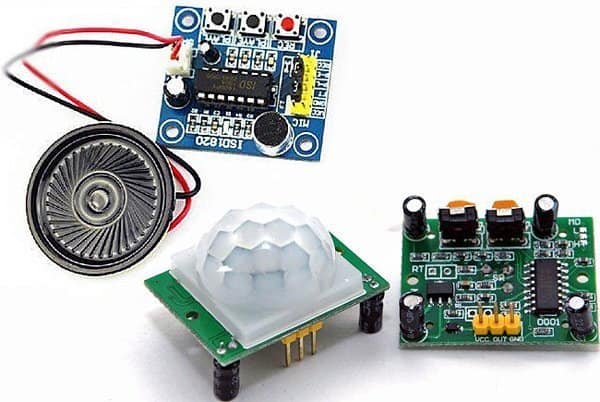
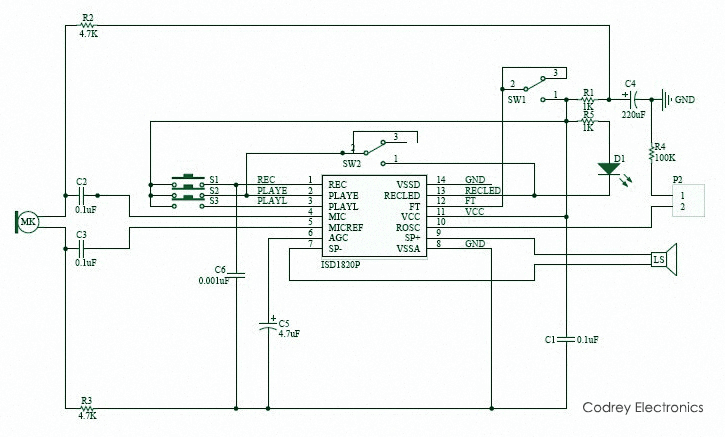
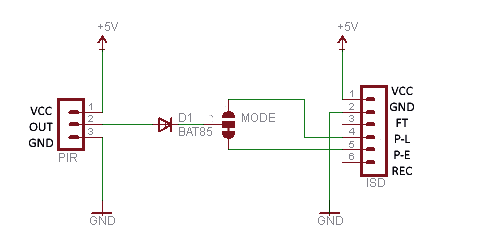
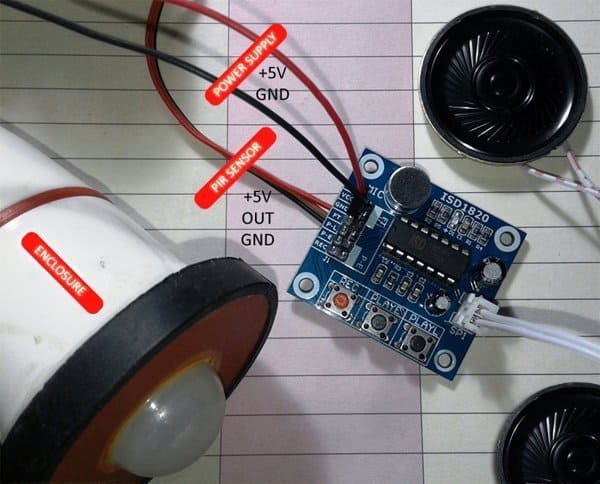
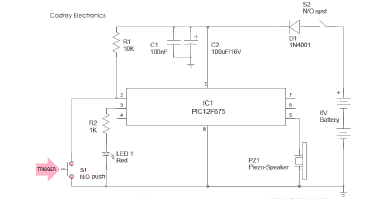
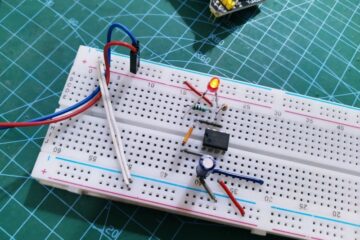
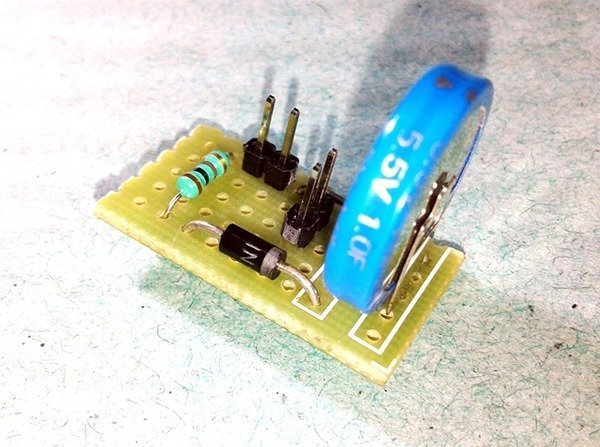
Great Post Hareendran.
I’m looking for a similar solution. Can you teach me to make a Security system with voice playback triggered by PIR or magnetic contacts but for a rough use, many people pass by my store so I wanna plug it and use a bigger speaker.
I have searched the web intensively but couldn’t find any finished product with those characteristics. Your way of explaining your work is clear so I hope you help me.
Above circuit is based on a cheap HC-SR501 passive infrared (PIR) motion detector module, hence you can try it without any change. However, since its audio output is very low (limited by the ISD1820 chip itself) you may need a small audio amplifier to drive the big speaker. See page 5 of this document – https://www.allelectronics.com/mas_assets/media/allelectronics2018/spec/ME-63S.pdf Thank you Javier!
Hello T.K.,
Please,can I get a module that can record 5-10 minutes.
How can you help, I want the parts shipped to Nigeria?
Thanks.
Oyeka: For recording voice up to 11 minutes, you can try a circuit based on IC- APR33A3-C2. Circuit/Module based on this IC can provide high quality recording and playback at 8 Khz sampling rate with 16 bit resolution. Contact this seller, and ask them about shipping to Nigeria. Thanks!
https://researchdesignlab.com/voice-playback-and-recorder-kit.html
Hi Javier,
This particular one will serve your purpose.
All you need to do is remove the speaker and connect an amplifier to its position then to your loud speaker.
If you can ship the parts to me, I could help.